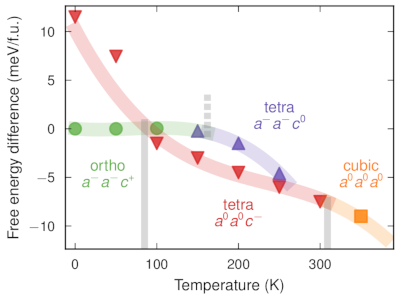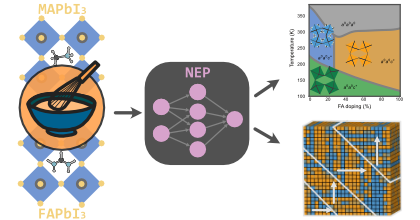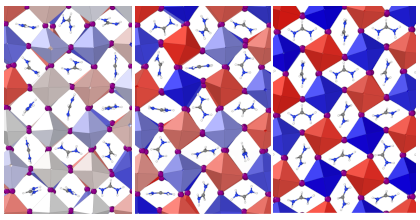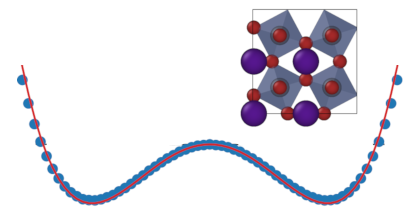Revealing the free energy landscape of halide perovskites: Metastability and transition characters in CsPbBr3 and MAPbI3
E. Fransson,
J. M. Rahm,
J. Wiktor,
and
P. Erhart
Chemistry of Materials 35, 8229
(2023)
arXiv:2307.12100
doi: 10.1021/acs.chemmater.3c01740
zenodo: 8138960
(associated data)
Download PDF

Halide perovskites have emerged as a promising class of materials for photovoltaic applications. A challenge in these applications is how to prevent the crystal structure from degradation to photovoltaically inactive phases, which requires an understanding of the free energy landscape of these materials. Here, we uncover the free energy landscape of two prototypical halide perovskites, CsPbBr3 and MAPbI3 via atomic scale simulations using umbrella sampling and machine-learned potentials. For CsPbBr3 we find very small free energy differences and barriers close to the transition temperatures for both the tetragonal-to-cubic and the orthorhombic-to-tetragonal transition. For MAPbI3, however, the situation is more intricate. In particular the orthorhombic-to-tetragonal transition exhibits a large free energy barrier and there are several competing tetragonal phases. Using large-scale molecular dynamics simulations we explore the character of these transition and observe latent heat and a discrete change in structural parameters for the tetragonal-to-cubic phase transition in both CsPbBr3 and MAPbI3 indicating first-order transitions. We find that in MAPbI3 the orthorhombic phase has an extended metastability range and furthermore identify a second metastable tetragonal phase. Finally, we compile a phase diagram for MAPbI3 that includes potential metastable phases.



